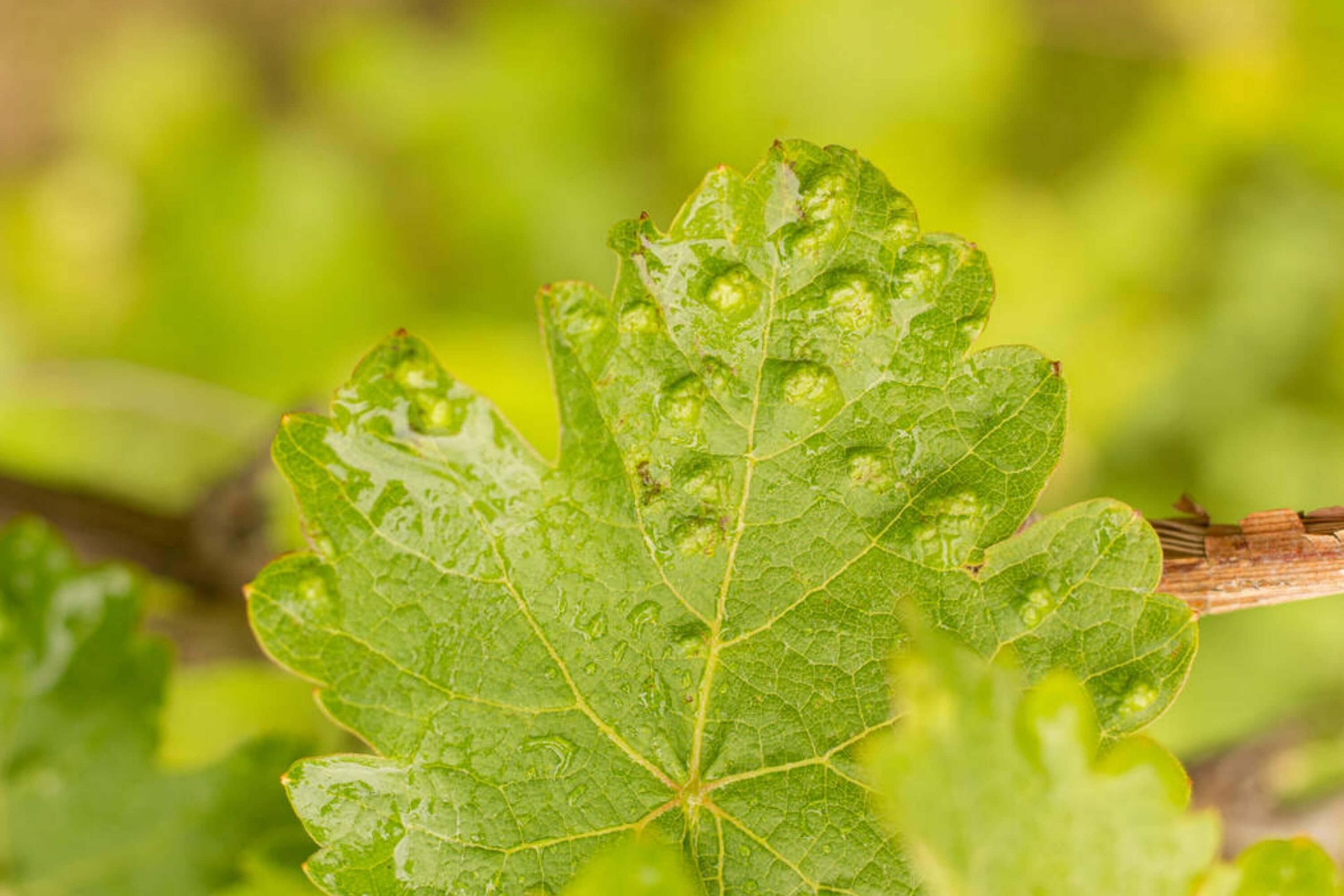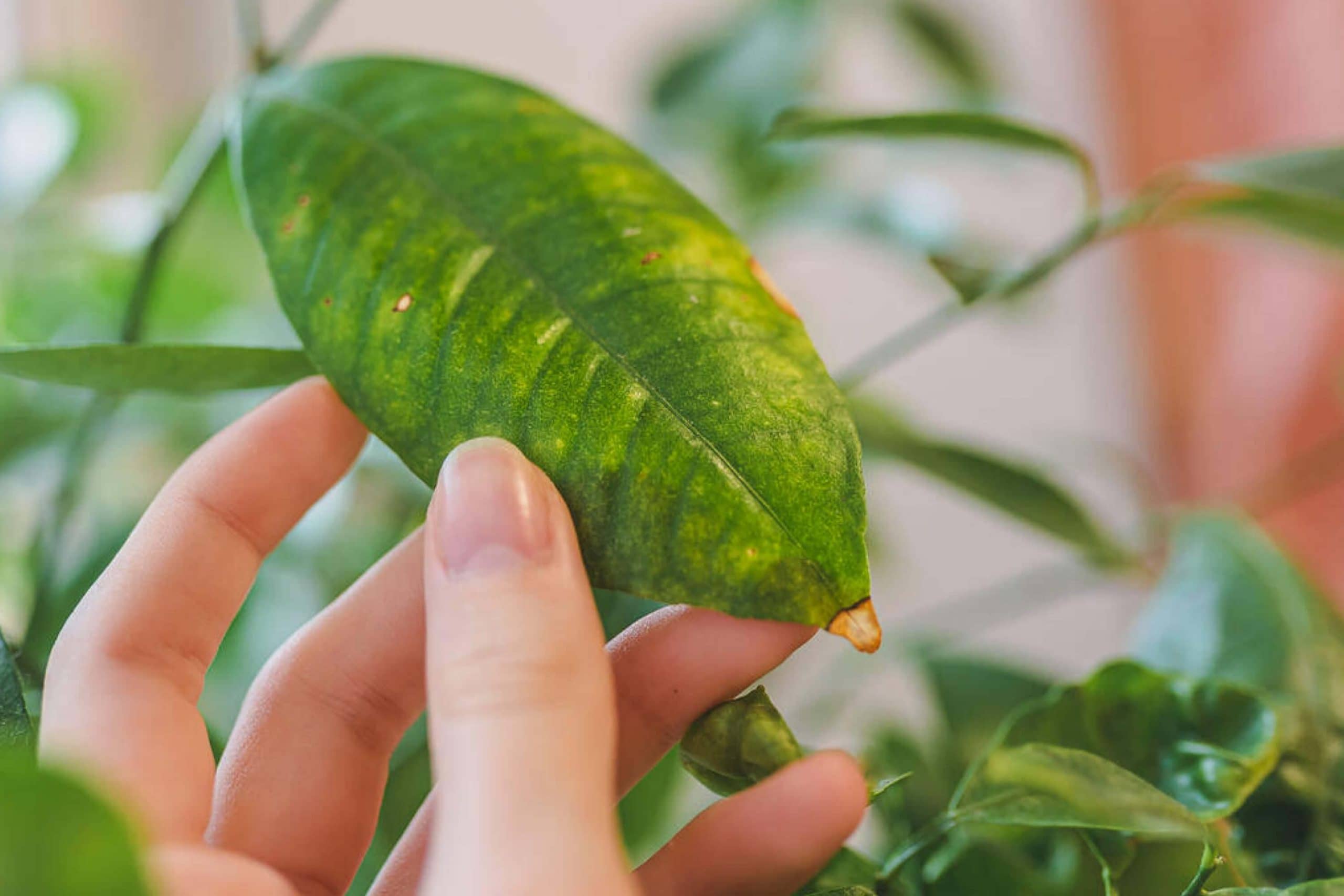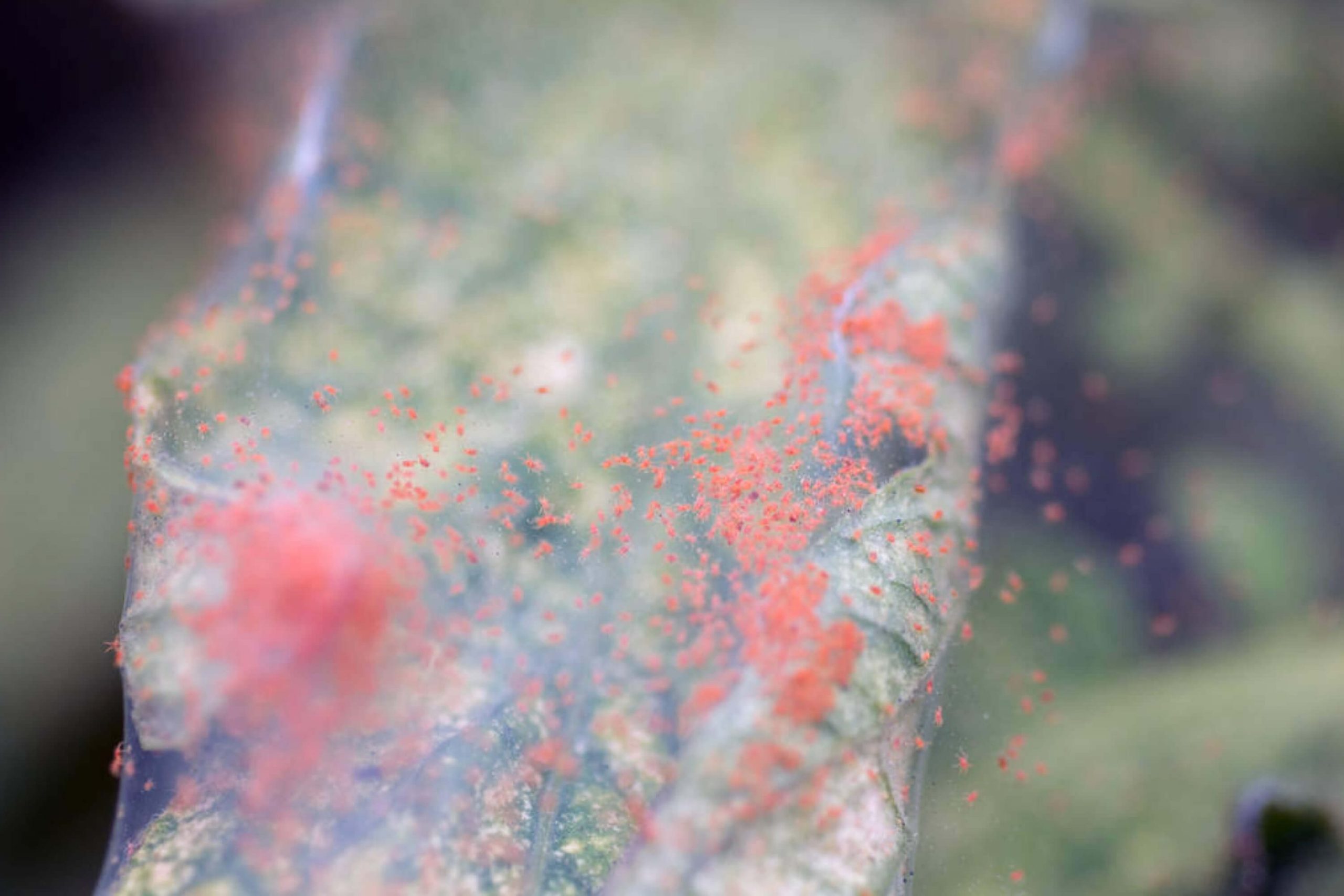Spider mites are very tiny, but this does not prevent them from making havoc on both indoor and outdoor plants in your home and garden!
These tiny creatures may also cause severe damage to crops in agricultural fields which makes them rather threatening to farmers.
This is why keeping spider mites under control at the very start of infestation is the key to making your plants live longer.
Naturally, if you have not spent your entire life growing crops or at least a garden, you will want to know more about the major spider mite signs so that you could define whether you have them in your household or not.
This is why we decided to share this article with you today! You will learn about the most prominent signs of spider mites on plants. This will help you to figure out how to know if you have spider mites at all.
Also, we will explain how these creatures reproduce and spread, and what you could do in order to get rid of them effectively and quickly. Finally, you will learn what attracts spider mites.
Like this, you will be able to prevent their appearance by removing all the attractive factors that might draw these creatures to your home.
Signs Of Spider Mites. How to Spot Them In the Early Stage Of Their Development
With such tiny creatures as spider mites, it is extremely difficult to catch that very moment when the infestation begins! You can’t just see them on plants because of their size! But how is it possible to spot them in the early stage of their development?
First of all, you need to keep in mind that spider mites can’t stand light! This is why they typically can be found on the leaves’ undersides, and this is where the infestation usually begins.
To spot it, you will not have to search too long: you can easily notice typical and well recognized discoloration or fading of the leaves’ color at the undersides. The discoloration will leave yellowish or brownish spots on the leaves’ undersides.
Also, you may find holes on the leaves. Spider mites are arachnids which means that they are related to spiders, but unlike their relatives, they don’t have fangs.
Instead, spider mites have a sucking organ which they use to suck the sap of the leaves.
When these creatures feed on the sap out of the leaf, the leaf turns yellow or brownish and then falls.
Of course, it is pretty hard to notice spider mites and the damage they are causing to your plants, especially when they are in low numbers. The reason is because both are away from your direct sight.
This is why, in order to check for spider mites, you would need to turn the leaves over to check their bottoms. And if you have a big garden, that can take you quite a lot of time!
As an option, you can also hold white paper underneath the leaves. When you turn the leaves over, some mites will fall. As you probably know, spider mites are tiny. An adult creature can grow only up to one-fiftieth of an inch!
To help you imagine their size, it is like the size of the period sign at the end of this sentence. This is why it is usually recommended to use magnifying glass for finding them on plants.
Spider mites’ color can be orangish, reddish, or green. These colors help to camouflage them well with the leaves and conceal the mites from their natural predators, as well as from humans.
As for the shape, spider mites are typically of oval shape, and if you look at them through the magnifying glass, you will see that they move around on the leaves’ surface.
If you watch the mites closely, you will also notice one or two dark spots on their back.
Spider mites can destroy flower plants and vegetable plants in your garden and even in your home easily.
They can even spread in greenhouse plants pretty fast. At the early stages of growth in spider infestation, you will come across clusters of webs on the leaves.
Dead leaves and dead leaves falling off the plants are signs of spider mites spreading fast.
How to Get Rid Of Spider Mites When You Spot Them On Early Stages?
Naturally, when you spot the early signs of spider mites infestation in your garden or in your home, you want to know how to get rid of them as soon as possible.
Otherwise, if you do nothing, be sure that your plants will die!
The process of getting rid of spider mites is relatively easy and simple, fortunately. However, to do it successfully, you will have to refuse using pesticides or insecticides.
You might be wondering why, and in a few minutes, you will get the answer.
But right now, let’s try to figure out what can be done in order to kill spider mites that are threatening your plants.

Related: Why Do I Have So Many Spiders In My House?
Quarantine Infected Plants
This step is useful for the potted plants in your garden and indoors.
To quarantine the plants infested by spider mites, take them away from healthy plants. It will go a mile to prevent the spider mites from infesting other plants.

Water Your Plants
Spider mites do have one weak side: they are easy to kill with just water! And quite few of us know that spider mites may spread in our gardens and home plants just because we might not be watering our plants often enough!
And if we don’t water our plant enough, that causes dry soil beds which are perfect breeding ground for spider mites. So, the first step to kill spider mites is to water the plants properly!
Make sure that you also bathe the plants by spraying water on the leaves and the stem. Don’t overlook the web cluster that spider mites make on stems and the leaves. Spray water on the web clusters too.
You can also add a little bit of soap in the water to make this “shower” even deadlier to these creatures since soapy water is a perfect homemade spider mite killer.
To protect your plants from further attacks by spider mites, make sure that you keep the leaves moist by spraying water often.
Pulverizer will be just perfect for doing this!
Clean Your Garden And Yard
To be able to get rid of spider mites successfully, you need to remember that they live under foliage and organic debris on dry soil. This is why you must keep your garden and yard clean and moist all the time!
That will help to stop the spider mites from breeding and further spreading.
Bring Down The Excessive Use Of Fertilizers
Fertilizers are essential, of course, for plants’ growth and health.
But when we are using them excessively, it is not only damaging for the soil (because it shoots up the phosphorus content of the soil) but also for the plants.

Introduce Predatory Mites
There are many natural spider mites predators that you can use to kill these creatures.
And what is especially good is that these predators are safe for humans, pets, and even plants.
They are beneficial insects that kill many damaging pests like aphids, moths, spider mites and many more.

Check If Spider Mites Are Coming Back
Since spider mites are tiny and they can easily hide, you must keep an eye on them in case they decide to come back.
This is why you should continue spraying water on the leaves and stems to keep them moist. That will definitely stop the mites from infesting the plants further.
Also, remember to maintain cleanliness in your garden, yard, and soil beds of both outdoor and indoor plants.
We would also recommend you spraying a mixture of water and neem or eucalyptus essential oils. That’s the best natural way to get rid of and prevent spider mites.
Now that you know what to do in order to get rid of spider mites if they appear on your plants, let’s learn more about how these pests breed and develop, as well as what attracts them to your homes and gardens.
Spider Mites Life Cycle
Like any insect or pest (or any other living being), spider mites have their own life cycle. Usually it takes them only twenty days to hatch out from their eggs and grow into adults. In between, there are larvae and two nymph stages.
The eggs of spider mites are translucent, and their shape is cylindrical. Since eggs are tiny as well, you can’t see them with a naked eye. During the fetus development, the egg turns off-whitish.
When the nymphs or baby spider mites hatch out, they start eating the leaves from the moment they are born. Female spider mites can live for only four weeks.
However, in general, a female spider mite can lay over a hundred eggs in these four weeks! So, for each spider mite, a hundred more spider mites can spread in your home and garden!
It’s also good to know that spider mites don’t have a season to spread.
They are active all year round unlike some other types of pests. All these creatures need is as little sunlight as possible and a dry place to live and breed.
And, of course, plants to eat. When living outdoors, spider mites typically hide underneath foliage, bark, and organic debris. Once they destroy a plant, they wait for other green leaves to grow.
Or they move on to the next plant with green leaves.
Related: How Do Spiders Get In the House?
How Do Spider Mites Spread?
Spider mites move from one plant to another when they are done with feeding on a plant. Lack of natural predators in your yard or garden also makes them spread fast.
These tine pests are able to easily hide in the soil beds for months and wait for green leaves to grow to feast on them.
That’s why you would find holes and discoloration on the leaves infested by spider mites.
These pests can also travel from one place to another by latching on to your skin and clothes. In fact, this is how we often bring them home, especially after long walks in the parks or woods!
What Draws Spider Mites to Your Homes And Gardens?
Except for the fact that we can bring these pests to our homes ourselves without even knowing about it, there are other causes for spider mites that attract them:
- High levels of phosphorus and nitrogen in the soil.
- Dry and dusty conditions.
- Excessive use of fertilizers which can cause high levels of phosphorus and nitrogen in the soil.
That’s why spider mites are a big problem in agricultural landscapes. And if you don’t water your plants enough, then dry conditions will attract the pests as well.

You will also come across spider mites in greenhouses. It is a bit dry and humid there, so the mites can breed and spread unless you get rid of them.
So now you know how to tell if you have spider mites with the help of the spider mites symptoms.
Also, you know what causes spider mites and what should be done to cast them away from your garden and home.
With all that in mind along with the information regarding their life cycle and other nuances, you will be able to protect your household from these pests easily.
[wp-faq-schema title=”Frequently Asked Questions”]

Where do spider mites come from on indoor plants? I live in an apartment so they couldn’t come from the garden. Any other ideas, maybe?
You could bring them on your clothes from any park in fact. Or from a forest if you have recently been there.
Does anyone know why it’s not recommended to use insecticide sprays on spider mites?
As far as I know, those sprays also kill the natural predators of mites, as well as other beneficial insects.
Hello everyone! Look, does anyone know whether spider mites can infest humans? Our neighbors have recently experienced a spider mites infestation which they successfully coped with, but now I’m worried that those creatures could get into our garden and we could be infested.
Hello! You shouldn’t worry at all. See, spider mites feed off plant cells and use plants in our gardens and yards to lay eggs and spin their webs. These particular mites need plant material to survive, which means it’s impossible for them to live on humans. Spider mites can indeed crawl or use clothing or other items to get from one plant to another, but they cannot live on humans.
We have quite many plants indoors and recently I noticed that some of them are damaged: they turned brownish and some of them are drying. I suspect it’s because of spider mites. If we do have these mites, can they travel between rooms?
I think they can’t. See, spider mites don’t travel much. In fact, they rarely leave the plant they’re feeding on. They can infest other plants indoors, particularly if the plants are touching, so perhaps your suspicions are true! And also, mites can also drop from the plant and crawl to another plant. The only way mites can be transported around the house is on clothing or objects that touch an infested plant.
Do spider mites live in soil? We’ve recently had an infestation but we got rid of those mites pretty fast. But now I’m noticing their signs on our garden plants again! None of our neighbors has them. So where could they come from?
It’s possible for spider mites to live in dirt indeed. Spider mites tend to hide in dry, arid soil, so keep the humidity high to avoid encounters. Speaking of plants, if you have healthy plants in your garden, they’re less likely to be affected by spider mites because these creatures prefer plants that are already weak.
Does anyone know any homemade spider mite killers? We have fruit trees in our garden so I would not like to use chemical products.
Well, the only solution I know is a mix of liquid dish soap and water. It will take care of invasive spider mites as the soap will stick to and suffocate them. You need to combine one quart of lukewarm water with one teaspoon of liquid dish soap, shake the solution up, and pour it into a spray bottle.
Where do spider mites come from exactly? I mean, what makes them attack plants?
Spider mites like dusty leaves on plants that are suffering from water stress. This is why a good way to make those plants unattractive to them is to wipe dirty leaves regularly and make sure your watering schedule is right for your plant. Also, you should keep an eye on your plants since mites prefer those that are weak and/or damaged.